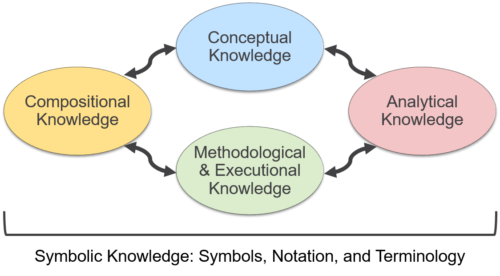Excerpts from a paper I wrote with my colleague Alejandro Saledo at Virginia Tech:
Aesthetic patterns created by the system architect in describing the purpose, function, and form of their designs are critical to convey meaning to other stakeholders on the relative quality of the architecture. The link between aesthetics and meaning can be traced back over 2000 years to Ancient Rome and the writings of Vitruvius. Vitruvius asserted in his book De architectura that a structure must exhibit the three qualities of firmitas, utilitas, venustas – that is, it must be solid, useful, beautiful. These are qualities common to many unprecedented engineered systems today.
Vitruvius wrote “In architecture, as in other arts, two considerations must be constantly kept in view; namely, the intention, and the matter used to express that intention: but the intention is founded on a conviction that the matter wrought will fully suit the purpose; he, therefore, who is not familiar with both branches of the art, has no pretension to the title of the architect. An architect should be ingenious, and apt in the acquisition of knowledge. Deficient in either of these qualities, he cannot be a perfect master. He should be a good writer, a skilful draftsman, versed in geometry and optics, expert at figures, acquainted with history, informed on the principles of natural and moral philosophy, somewhat of a musician, not ignorant of the sciences both of law and physic, nor of the motions, laws, and relations to each other, of the heavenly bodies…We see how few of those who profess a particular art arrive at perfection in it, so as to distinguish themselves: hence, if but few of those practising an individual art, obtain lasting fame, how should the architect, who is required to have a knowledge of so many, be deficient in none of them, and even excel those who have professed any one exclusively” [6].
Vitruvius implied that a good systems architect needs to master a wide set of disciplines to be successful, and also a firm grasp of both theory and practice in those disciplines. These are conceptual and compositional practices. A good systems architect must learn analytical methods, as well as the history and experience across multiple domains, in order to gain the proper set of heuristics for successful architecting.
We developed a simple framework for competency building in systems architecture, inspired by a similar model in the U.S. Advanced Placement guide for high school music education. In the spirit of Vitruvius, a good architect studies, learns, and exhibits competencies across all four sets of knowledge areas. Improving systems thinking in engineering primarily promotes the development of knowledge across a breadth of disciplines in the conceptual competency sets. This is the basis of so-called “T-shaped” skills: conceptually broad yet still analytically and methodologically deep in at least one discipline. Compositional knowledge in technical disciplines, outside of traditional architecture and to some extent software, is not explicitly taught. However, understanding of composition, creativity and expression, and the ability to describe and communicate the envisioned transformation are core to the portfolios of accomplished artists, architects, and systems thinkers. Analytical and Methodological competencies are the core domain knowledge we apply to our work.
Technical competencies can be applied with success, and have traditionally been taught, almost completely in the analytical and methodological knowledge sets. In the spirit of Vitruvius, a good architect studies, learns, and exhibits competencies across these and the conceptual and compositional sets, as well as across multiple disciplines. Learning to communicate across all four knowledge sets is essential the system architect.

